#Helical spring experiment
Explore tagged Tumblr posts
Text
Class 11 Physics Practicals: Hands-on Experiments to Master Key Concepts
Class 11 Physics Practicals – Introduction Class 11 physics practicals are crucial because they assist students connect theory to practical applications. Seven basic experiments that improve your knowledge of motion, forces, measurements, and fluid dynamics will be covered in this blog post. “Mastering the Simple Pendulum: Discover the secrets of Time and Motion” Simple Pendulum Experiment :…
#CBSE class 11 physics practicals#Class 11 physics practicals#Hands-on physics experiments#Helical spring experiment#Learning physics by doing#Mastering physics concepts#Physics experiments for students#Physics lab expereiments#Physics practicals class 11#Practical physics guide#Principle of moments#Resonance air column#Screw gauge experiment#Stokes law experiment
0 notes
Text
The Evolution of the Tesla Coil

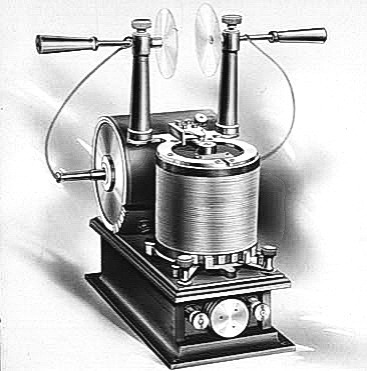
Nikola Tesla invented the Tesla coil as part of his exploration into lighting, wireless power transmission, and radiofrequency experiments. He developed the coil to produce high-voltage, low current, high-frequency electricity. The Tesla coil consists of primary and secondary coils that are inductively coupled, and the circuit is designed to resonate at a specific frequency. This resonance enhances the efficiency of energy transfer between the coils, enabling the generation of high-voltage, high-frequency alternating current.
His first Tesla coil was a bipolar coil created around 1891, and was demonstrated before scientific institutes from 1891-1893. His patents reveal that they were essentially intended for light production using both high frequency and high voltage at the same time. He also mentions in his patents how he discovered that a single wire could be used to light a light bulb. Generally, light bulbs require two wires to operate – one for the positive (live or hot) and one for the negative (neutral). He also discarded wires completely lighting bulbs wirelessly. Tesla improved upon the bipolar coil over many years using them for gas engine ignition, wireless, ozone production, and to create undamped waves.
In 1893, Tesla developed the bifilar spiral coil, which is a type of coil wound with two parallel wires, known as bifilar winding. The wires are wound side by side in a spiral pattern, maintaining close proximity throughout the coil. It was built in an attempt to avoid the employment of condensers, which are expensive and difficult to maintain. The coils themselves were meant to accomplish the same ultimate object as the condensers.

In 1894, Tesla evolved his coil into a conical coil. A conical coil refers to a coil or winding in the shape of a cone. These coils were sometimes employed in his wireless power transmission experiments and other electrical investigations. The shape of the coil can influence its inductance, capacitance, and resonance properties, impacting its performance in different applications. This coil allowed Tesla to reach tensions of 1 million volts.
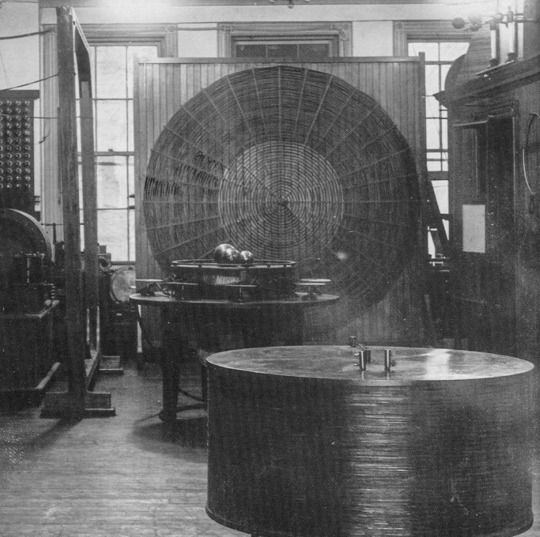
In 1897, Tesla developed the flat spiral coil, similar to his bifilar coil. This type of coil forms a flat, spiral pattern. The specific shape and dimensions of the coil can influence its inductance and other electrical properties. The main reason Tesla started using flat spiral coils was because they were relatively safe, since the highest potential terminal is at the center, and also because they better suppressed the sparks, which were essentially losses in the circuit, allowing him to achieve higher voltages:
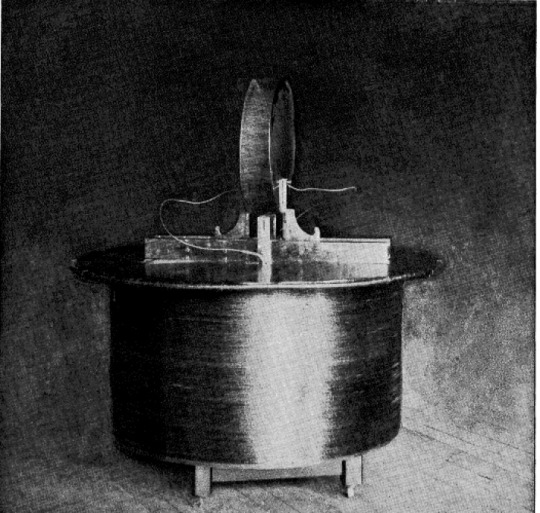
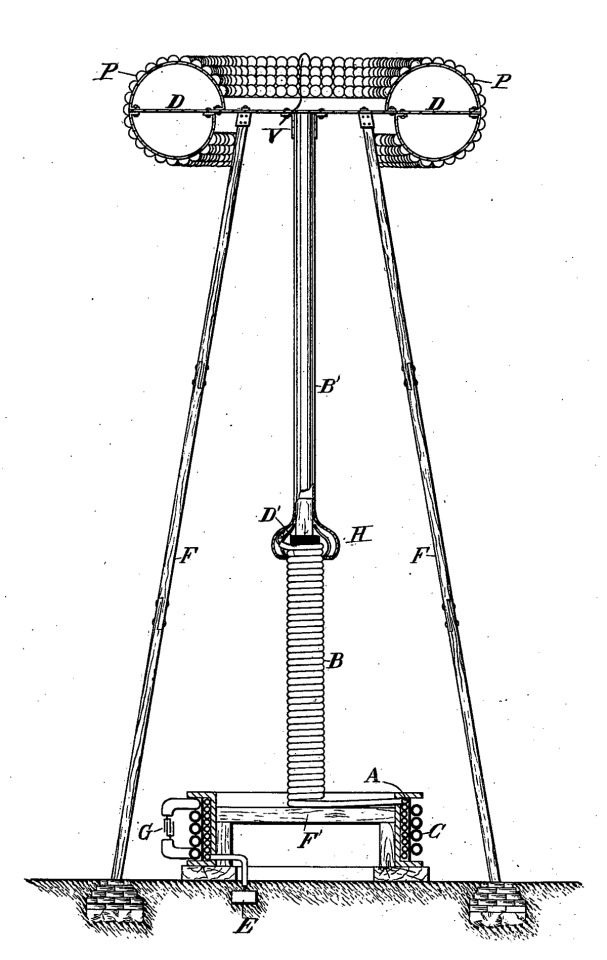
Another version of his coils was his Helical coil. A helical coil is a coil wound in the shape of a helix or spiral. The helical coil configuration is characterized by the wires being wound around a cylindrical form in a continuous spiral pattern. Tesla utilized helical coils throughout the late 1890s and in his Colorado Springs Experiments. The coils were used in his wireless transmission experiments, and he employed helical resonators to investigate the behavior of electromagnetic waves. The helical shape offers specific electrical properties and can influence the resonance and performance of the coil in certain applications.
Finally, the Tesla coil would eventually evolve into his Magnifying Transmitter. Tesla designed it as part of his wireless power transmission experiments. The magnifying transmitter was intended to efficiently transmit electrical energy over long distances without the need for wires. The system involved a large coil, often called the magnifying transmitter coil, which could produce high-frequency, high-voltage electrical currents. Tesla believed that this technology could revolutionize global communication and provide a means for delivering electrical power wirelessly by using the earth itself as a conductor.
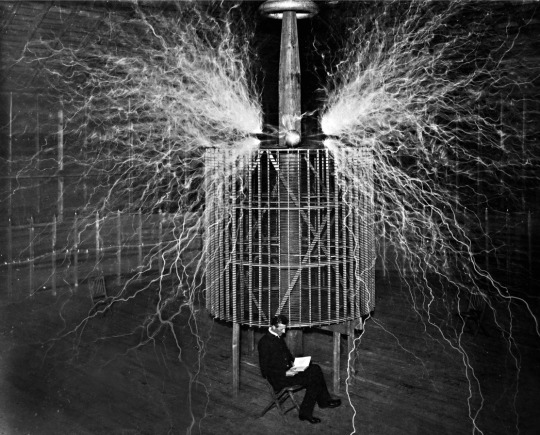
The magnifying transmitter would become his Wardenclyffe Tower. Unfortunately, Tesla ended up lacking the investments and funds to finish his work in its entirety. Some say he failed because his idea didn’t work, but that’s not true at all because his Colorado experiments proved that they did. In his head, the transmission of energy was a matter of engineering. If he had a machine that could send energy 20 miles, then he could build a machine that could send energy a thousand miles. As long as he understands the motive power, he could build a machine that will do all that he requires of it. He simply underestimated the cost of his system. His failures to finish his work would leave him with the public persona as being the mad scientist who had unrealistic ideas for the future.
Ultimately, Tesla would not realize his dream of providing humankind with cheap, unlimited energy in his lifetime; however, his legacy forever lives on through the incredibly impactful experiments, and the evolution of the Tesla Coil.
“Technical invention is akin to architecture and the experts must in time come to the same conclusions I have reached long ago. Sooner or later my power system will have to be adopted in its entirety and so far as I am concerned it is as good as done. If I were ever assailed by doubt of ultimate success I would dismiss it by remembering the words of that great philosopher, Lord Kelvin, who after witnessing some of my experiments said to me with tears in his eyes: ‘I am sure you will do it.’”--Nikola Tesla
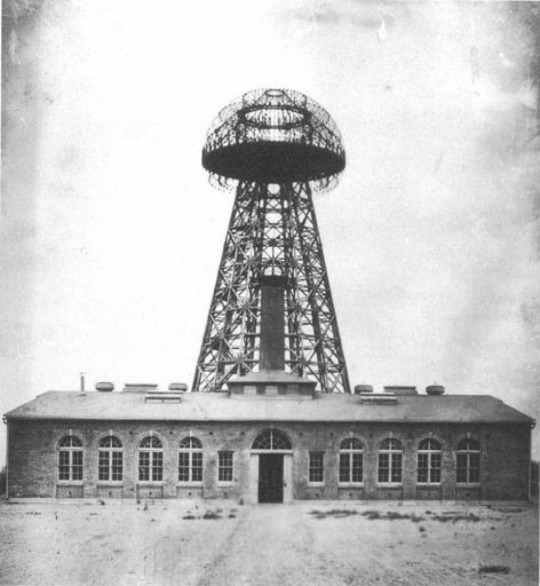
#nikola tesla#science#history#electricity#invention#wireless#energy#power#Tesla coil#quotes#ahead of his time#ahead of our time
239 notes
·
View notes
Text
Helical Door Spring in Ghaziabad
Helical door springs in Ghaziabad are essential for ensuring smooth and controlled door movements in various settings. Manufacturers like Ritz Metal Works offer a range of helical door springs, including models such as the Brass 555, Steel 555. These springs are designed to handle doors weighing. They feature smooth functioning with automatic speed control, making them ideal for high-traffic areas like offices, malls, and hospitals. Available in finishes like brown, black, and golden, these springs combine durability with aesthetic appeal. With over 70 years of experience, Ritz Metal Works ensures top-notch quality and consistency in their products.
0 notes
Text
Foundation Repair Seattle: Protect Your Home with Trusted Structural Solutions
Seattle’s wet climate and shifting soils can take a serious toll on your foundation. Cracks in walls, sloping floors, or sticking doors may seem minor, but they’re often signs of deeper foundation issues. At Robbins Foundation Systems, we specialize in expert foundation repair Seattle, helping homeowners restore safety, stability, and value to their properties.
Signs You Need Foundation Repair
Many homes in Seattle are built on moisture-sensitive soils. When water levels rise or fall, the ground beneath your home shifts—causing your foundation to settle unevenly. If you’ve noticed any of the following, it may be time to schedule a foundation inspection:
Cracks in drywall or exterior walls
Uneven or sagging floors
Gaps around doors and windows
Leaning chimneys or bowing walls
Moisture intrusion in the basement
These problems won’t resolve on their own. Early detection and professional foundation repair services are key to preventing further structural damage.
Our Foundation Repair Methods
Robbins Foundation Systems offers industry-leading foundation repair in Seattle, customized to the specific conditions of your home. Our repair options include:
Foundation Piers: We install helical or push piers deep into stable soil to lift and support sunken foundations.
Wall Anchors and Bracing: Stabilize bowing or leaning foundation walls, especially in basements.
Carbon Fiber Reinforcement: Strengthens foundation walls with non-invasive, durable materials.
Crack Repair and Sealing: Prevents water intrusion and restores structural integrity.
Our experienced team begins every job with a comprehensive inspection to assess the underlying cause of your foundation issues and recommend the most effective repair plan.
Why Seattle Homes Need Foundation Repair
Seattle’s rainfall, underground springs, and varied terrain make foundation problems especially common in older and even newer homes. Robbins Foundation Systems understands these regional challenges and offers solutions designed to last through decades of wet winters and shifting ground.
We use only the best products and proven techniques backed by industry warranties and our decades of experience.
Trust Robbins for Foundation Repair in Seattle
With over 30 years of hands-on experience, Robbins Foundation Systems has built a strong reputation as a reliable provider of foundation repair Seattle. Our team is committed to honesty, transparency, and delivering lasting results—whether it’s a simple wall crack repair or a complete foundation stabilization project.
Schedule a Free Foundation Evaluation Today
Don’t wait for foundation problems to get worse. Contact Robbins Foundation Systems today to schedule a free inspection. We’ll diagnose the issue, explain your options, and give you a clear path forward—because every solid home starts with a solid foundation.
Connect with Us :-https://robbinsfoundationsystems.com/foundation-repair-seattle-protect-your-home-with-trusted-structural-solutions/
#FoundationRepairWashington#StructuralRepairFoundationPierPierce#PostAndPierFoundationPierce#PostAndPierFoundationSnohomish#BasementWaterproofingSeattle#FoundationRepairSeattle#SlabJackingContractorsNearMe#ConcreteSlabLeveling#PostAndPierFoundations#FoundationSpecialistNearMe#StructuralFoundationRepair#ConcreteLevelingSeattle#SlabJackingNearMe#MudJackingContractor#ConcreteLifting
0 notes
Text
i visited the mall with a couple friends last week after school. we were looking for birthday presents for two of our friends who shared the same birthday. in fact one of them was literally with us. we went to miniso and a couple more stores like max and it was fun. anyway, after the birthday friend left. i could finally buy something for her...though i didn't cause i couldn't find anything that she would like (╥﹏╥) but i did buy a candle for my other birthday friend. my other friend who was still with me is seriously a makeup diva, she knows everything! like i was looking at a lip oil and i was very confused, she explained its purpose and how to use and picked the right shade for me. she found a makeup store and asked the assistants there to find me the right lip liner. turns out it was super expensive so we just ran away (not literally ofc) but it was so fun.
she's the kind of friend who will maintain her composure and stand up for her friends. i remember last year we were doing this physics experiment related to the spring constant and it involved this helical spring and a weight hanger. all of my values except the first one were in the multiple of 12. i was so insistent on making sure the first value was a multiple of 12 that i made us to the first 200 gram weight like 10 times, no joke. either way it didn't work but she still helped me out, even though she was clearly annoyed by it (╥﹏╥)
1 note
·
View note
Text
Helical Door Spring in Faridabad
Looking for a helical door spring in Faridabad? Our helical door springs provide reliable and efficient door closing solutions, offering smooth and controlled operation. Made from high-quality materials, these springs ensure durability and long-lasting performance, making them ideal for both residential and commercial doors. Designed to handle frequent use, they offer precise tension control and prevent door slamming. Easy to install and maintain, our helical door springs are the perfect choice for a seamless door experience in Faridabad.
0 notes
Text
The Science Behind Spring Lock Washers: How They Maintain Tension
If you've ever worked with machinery, electronics, or even simple home repairs, you've likely encountered spring lock washers. But how much do you really know about these little components? In this article, I’ll dive into the science behind spring lock washers and explain how they maintain tension to keep your projects tight and secure.
What Are Spring Lock Washers?
Spring lock washers are mechanical fasteners designed to prevent loosening due to vibrations and other forces. They feature a unique spring-like shape that gives them the ability to maintain tension between the nut and the surface they are securing. These washers are typically made of stainless steel, carbon steel, or other durable metals to ensure a long-lasting, reliable performance.
In essence, spring lock washers help hold bolts, nuts, and screws in place, ensuring your assemblies stay tight even under tough conditions. But what makes them so effective? Let’s dive deeper into their design and functionality.

How Do Spring Lock Washers Work?
Understanding how spring lock washers work is key to appreciating their importance. Here's how they do their job:
Compression and Expansion: The most critical function of a spring lock washer is its ability to compress and expand. When you tighten a bolt or nut, the washer compresses, creating a clamping force. This force keeps the fastener firmly in place.
Spring Action: The spring action of the washer ensures that it continually applies pressure to the fastener, even as it experiences vibrations or movement. This tension is crucial because it helps prevent the fastener from loosening over time.
Vibration Resistance: The main reason people turn to spring lock washers is their resistance to vibrations. In many environments, vibrations are unavoidable, and without a locking mechanism like a spring lock washer, your fasteners would gradually lose their grip and cause equipment failure.
The Science Behind Tension Maintenance
Now, let's break down the science behind how spring lock washers maintain tension:
Elasticity of the Material: The material used to create the washer plays a significant role in its ability to maintain tension. Steel, for example, is highly elastic, meaning it can return to its original shape after being compressed. This elasticity helps the washer continually apply force to the fastener.
Shape of the Washer: The unique shape of a spring lock washer is designed to provide consistent pressure. The washer is typically flat, but it has a slightly bent or helical shape, which gives it the "spring" effect. As the fastener is tightened, the washer compresses and exerts force against the nut or bolt, keeping it firmly in place.
Preload Force: When you tighten a bolt, you create preload force, which is the initial tension between the washer and the fastener. This preload is essential for ensuring that the washer works effectively. Without sufficient preload, the washer won't apply enough force to prevent loosening.
Benefits of Using Spring Lock Washers
Spring lock washers offer a variety of benefits that make them indispensable in mechanical applications. Here are a few reasons why you should consider using them:
Prevents Loosening: The most obvious benefit is that spring lock washers prevent nuts and bolts from loosening due to vibrations or movement. This is especially important in high-vibration environments like engines, heavy machinery, and vehicles.
Improves Durability: By maintaining constant tension, spring lock washers help increase the overall lifespan of your fasteners. This reduces the need for constant maintenance or tightening, saving you time and effort.
Cost-Effective Solution: Spring lock washers are inexpensive compared to other locking mechanisms like lock nuts or adhesive-based solutions. For a small investment, you can significantly improve the reliability of your assemblies.
Easy to Use: Spring lock washers are incredibly easy to install. Simply place the washer between the nut and the surface you are securing, and you’re good to go. There's no special equipment needed, making them a great choice for DIY enthusiasts and professionals alike.
Applications of Spring Lock Washers
Spring lock washers are incredibly versatile and can be used in a wide range of applications. Here are some of the most common ones:
Automotive: In the automotive industry, spring lock washers are used to secure critical components like engine parts, suspension systems, and transmission components. The ability to withstand vibrations makes them ideal for these applications.
Electronics: In electronics, spring lock washers are often used to secure connectors, circuit boards, and other sensitive components. Their tension-maintaining properties are crucial for preventing loosening over time, especially in high-frequency devices.
Aerospace: The aerospace industry also relies on spring lock washers for securing parts in aircraft. In these high-stakes environments, preventing loosening is crucial for safety and performance.
Industrial Machinery: In factories and heavy machinery, spring lock washers are used to keep bolts and nuts in place, even under the toughest conditions. These washers help ensure that machinery runs smoothly without constant need for maintenance.
Choosing the Right Spring Lock Washer for Your Needs
When choosing a spring lock washer, it’s essential to consider several factors:
Material: Depending on the environment, you may need a washer made from stainless steel, carbon steel, or other materials. Stainless steel is highly resistant to rust and corrosion, making it ideal for outdoor and marine applications.
Size: Spring lock washers come in various sizes, so make sure to choose the right size for your bolt or nut. A washer that's too large or too small won’t provide adequate tension.
Load and Vibration Resistance: If you’re dealing with heavy machinery or high-vibration environments, you’ll need a washer that can withstand more force. Look for washers specifically rated for these types of applications.
Conclusion
Spring lock washers are simple yet incredibly effective components that play a vital role in maintaining the security and tension of fasteners. Their ability to resist loosening from vibrations and their cost-effectiveness make them a go-to choice for various industries, including automotive, aerospace, and industrial machinery.
By understanding how these washers work and why they maintain tension, you can make better decisions when choosing fasteners for your projects. Whether you’re a DIYer or a professional, spring lock washers provide an easy and reliable solution for keeping your assemblies tight and secure.
#SpringLockWashers#WasherScience#TensionMaintenance#MechanicalEngineering#IndustrialParts#FastenerTechnology#LockingWashers#EngineeringSolutions#PrecisionEngineering
0 notes
Text
Helical Door Spring
The Helical Door Spring is a durable and efficient solution designed to ensure reliable door operation. Engineered with precision, its helical shape provides optimal tension, allowing doors to close securely and smoothly every time. Made from high-quality materials, this spring is built to withstand heavy use, making it ideal for both residential and commercial applications. Its compact design allows for easy installation in various door types, while promoting safety and convenience. Experience long-lasting performance with the Helical Door Spring for your door needs.
0 notes
Text
Enhance Your Guest Experience with Premium Hotel Hardware: The 39” 75” Rollaway Bed
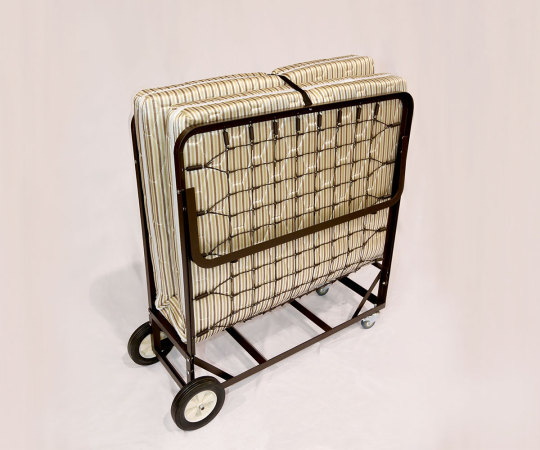
Providing guests with exceptional comfort and convenience is paramount in the hotel and hospitality industry. A crucial component in ensuring a pleasant stay is the quality of the hotel hardware you offer. Enter the 39”x75” Rollaway Bed with a 5” Innerspring Mattress, a versatile and practical addition to any hotel or motel room. This blog delves into the features and benefits of this rollaway bed, highlighting why it’s an excellent investment for your establishment.
Comfortable and Supportive Mattress
The 39”x75” Rollaway Bed features a 5” innerspring mattress designed to provide optimal comfort and support. The innerspring technology ensures even weight distribution, minimizing pressure points and offering a restful sleep experience. As a key piece of hotel hardware, this mattress ensures that guests will appreciate the high-quality sleep they get, feeling rejuvenated and ready for the day ahead.
Robust Frame with Helical Springs
The bed's frame is constructed from durable 30x30x3mm angle steel, ensuring sturdiness and longevity. This robust frame is equipped with 12-gauge helical springs, which enhance the bed's stability and support. The combination of a strong frame and helical springs ensures that the bed can withstand regular use without compromising on comfort or safety, making it an essential piece of hotel hardware.
Dust Proof Cover
Hygiene is a top priority in the hospitality industry. The rollaway bed comes with a dustproof cover, protecting the mattress from dirt, dust, and allergens. This feature not only keeps the mattress clean but also extends its lifespan, ensuring your investment in high-quality hotel hardware remains in excellent condition for years to come.
Auto Leg Opening Mechanism
Convenience is key when setting up additional beds for guests. The rollaway bed is equipped with an auto leg opening mechanism, making it easy to set up and fold down. This feature saves time and effort for your staff, allowing them to focus on other essential tasks. Guests can enjoy a comfortable bed in minutes, without any hassle, thanks to this efficient piece of hotel hardware.
Easy Mobility with Big Wheels
Transporting rollaway beds can be challenging, especially in larger establishments. The rollaway bed is designed with two big wheels, enabling easy movement and transportation. Whether you need to move the bed within a room or across different floors, the large wheels ensure smooth and effortless mobility, highlighting the practicality of this hotel hardware.
Conclusion
The 39”x75” Rollaway Bed with a 5” Innerspring Mattress is an outstanding addition to any hotel or motel room, offering a perfect blend of comfort, convenience, and durability. With its robust frame, supportive mattress, dustproof cover, auto leg opening mechanism, and easy mobility, this rollaway bed meets all the requirements for an exceptional guest experience. Investing in quality hotel hardware that enhances your guests' comfort and satisfaction will positively impact your hotel's reputation and reviews.
Upgrade your guest rooms with the 39”x75” Rollaway Bed today and experience the difference it makes in providing a superior stay for your guests. Ensure your hotel hardware is top-notch and see the benefits in guest satisfaction and operational efficiency.
0 notes
Text
"Unlocking the Secrets of Elasticity: The Helical Spring Experiment"
Experiment: Determining the Force Constant of a Helical Spring Force constant of a helical spring: Objective To determine the force constant (spring constant) of a helical spring by plotting a graph between the applied load and the resulting extension. Force constant of a helical spring:Materials Required Helical spring Stand with a clamp and scale arrangement Slotted weights (known masses- say…
#CBSE PHYSICS#Elasticity#Experimental physics#Force and extension#force constant#GRADE 11 PHYSICS#Hooke&039;s law#Mechanics#Physics Experiment#Physics lab#Science lab#spring constant#Spring constant determination#Spring experiment
0 notes
Text

"433MHz Helical Spring Straight Antenna" 2023
It seems like your query is a bit unclear. "Helical Spring Straight Antenna" could refer to a few different things. If you're referring to an antenna design, it might be a combination of different antenna types. Let me provide you with some information about helical antennas, spring antennas, and straight antennas:
Helical Antenna: A helical antenna is a type of radio antenna that consists of one or more helixes or coils. It's known for its three-dimensional radiation pattern, which can be either circularly polarized or linearly polarized. Helical antennas are commonly used in applications where a circularly polariz ed signal is desired, such as in satellite communication and GPS systems.
Spring Antenna: A spring antenna typically refers to an antenna that incorporates a coiled or spring-like element in its design. The spring-like structure can provide flexibility and resilience, making it suitable for applications where the antenna might experience mechanical stress or vibrations. These antennas are sometimes used in vehicles or rugged environments.
Straight Antenna: A straight antenna is a simple linear antenna, often referred to as a "monopole" or "dipole" antenna. It consists of a straight conductor, usually vertical or horizontal, that radiates or receives electromagnetic waves. These antennas are common and widely used due to their simplicity and ease of installation.
If you meant something different or have a specific question about any of these types of antennas or their combination, please provide more context or details, and I'll be happy to assist you further.
#Antenna manufacturer in india#rf antenna#rf antenna manufacturers in india#GSM Antenna#GPS antenna#5G antenna#4G antenna#RF antenna#IOT LORA antenna#glonass antenna#rf antenna types#rf antenna price#rf antenna cable#rf antenna adapter#rf antenna amplifier#rf antenna analyzer#rf antenna australia#rf antenna best buy#rf antenna buy online#rf burns antenna#best rf antenna#best material for rf antenna#buy rf antenna splitter#rf antenna connector#rf antenna companies#rf antenna coil#yagi antenna#best indoor antenna#antenna cable#antenna company
0 notes
Text
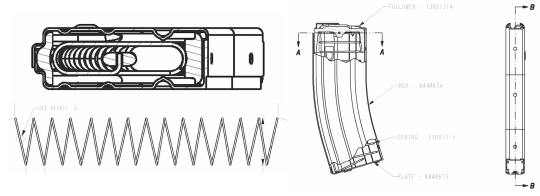
Trigger warning. Few things stir the shit pot in the firearms circles like saying "1911's are outdated over rated relics of your great granddad's war." or "It's ok to keep your magazines filled damned near forever and not worry about spring failure." I mean people lose their shit over this stuff, well boys and girls, 1911's are great firearms but it's not my first choice in fight ( and I have used one in the live fire defense of my life.) and I keep magazines loaded sometimes for years at a time with zero failure due to magazine springs. I loaded 8 magazines in 2010 as an experiment, in 2030 I'll shoot them. I am willing to bet my life that they will still work just fine. I know I have put my life in the hands of magazines that were loaded for long periods of time in extrema heat and dirt conditions again with no failure due to the springs. I got this from a friend of mine years and years and it speaks to the truth of this issue.
Spring Sprung Sprang... the skinny on use of springs in firearms. Springs "rest" in their natural stress-free shape. When compressed or stretched within their normal service limits, they are well within the "elastic range" of the metal. This is the stuff of Mechanics of Materials 101. When you stretch ...steel in a laboratory, it exhibits a relationship between tension and deflection that matches a rather uniform curve. This "curve" is actually a straight line all the way through the elastic range of the metal. It then falters and evens out within the "plastic range" of the metal. Once you exceed the ultimate strength of the steel, it fails by breaking. The "elastic range" is defined as the range of tension you can put on a sample of material, within which it will stretch while under tension and then return to its original shape when the tension is removed. Just like a piece of rubber or elastic. You pull on it, it stretches. You let go, it returns to its original shape. The "plastic range" is defined as the range of tension beyond the elastic range. We're talking permanent deformation here. The metal stretches at its weakest point and actually becomes thinner as it stretches. Tensile stress is concentrated in this thinner area, and this is where it will eventually break. "All springs are designed to be used in normal service within the "elastic range" of the metal. A coiled spring is in both tension and compression when not in its natural state. The helical coils are actually in flexure around the circumference, and of course flexure involves both tension and compression about a neutral axis. When you step on the middle of a steel bar that's supported at the ends, it experiences compression at the top and tension at the bottom. Springs experience this along the length of the coils, with the centerline of the coils being the neutral axis. When you stretch the spring from its natural state, and then compress it, you are just switching the "side" of the tension and compression. They reverse about the neutral axis. So... Because springs are designed to stay within the elastic range of the steel during service (and cocking the hammer of your weapon is well within the service range of the spring), you never permanently deform the spring. It will return to its natural shape when released. It does not "weaken" the spring to keep the hammer cocked. Just like it does not "weaken" a magazine spring to keep it loaded with ammunition. These are rumors spread around the firearms community by people who don't understand basic Mechanics of Materials. Can springs wear out without being stretched past the elastic range? Sure they can. Temperature fluctuations, rust, and cyclic shock loading within the elastic range can affect the cyrstalline properties of steel. But keeping your hammer cocked or your mag loaded isn't going to do it."
40 notes
·
View notes
Text
Helical Door Spring in Faridabad
Looking for a helical door spring in Faridabad? Our high-quality helical door springs provide reliable and durable door closure solutions for both residential and commercial properties. These springs ensure smooth, controlled door operation and are designed to handle heavy-duty use. Made from premium materials, they offer long-lasting performance and can be easily installed for a seamless experience. Perfect for various types of doors, our helical door springs in Faridabad guarantee both functionality and strength for your door systems.
0 notes
Video
youtube
H-el-ical// LIVE Limited Production Album Song Commentary 〜「elements」Edition 〜♪ 空 – Look ahead
In this weekly series all H-el-ical// songs from the limited albums (only available at the live venue and through mail order) will be discussed. The look of the series has changed a bit, there is some editing here and there and we now have a proper intro. Hikaru and the composer Hideyuki Gushimiyagi are talking about the song production and share some inside stories. There will also be comments from other creators that participated in the making of the individual songs. Please be sure to check out everyone’s thoughts. A new video airs every Saturday at 20:00 (JST). Find summaries for all previous videos in the tag #helical-video-series.
This time sound producer Akihiro Tomita will provide answers for the questionnaire.
H-el-ical// “elements” Mini Album MP3s
My English Translation of the Lyrics
Summary/Highlights 〈(•ˇ‿ˇ•)-→
The last song of “elements”. The lyrics are inspired by what kind of sceneries one can envision while looking up at the sky. Gushi says it was hard to express the sky with the music. For example, with “water” and “fire” you can use specific sounds that reflec those elements but the “sky” does not really make any sounds that could be expressed with music. The vibe of the song changed a lot throughout the production. She recorded her singing before it was even arranged so she had to idea what the final result whould be. She feels like it will also be very different during the live performance. Gushi is being a fanboy and gushing over old Kalafina songs. He has always been so very touched by the world which was created in those songs and while he still has a lot to learn and gain many more experiences he hopes that he can envoke a similar feelings with his songs. Hikaru says that even during Kalafina times there was quite a difference between the recorded song and the song they performed live but now as a solo artist, these differences have become even more apparent. There are so many nuances that keep being added or changed from the very first moment she starts writing the lyrics. Lots of trial and error, there is no right answer, they are all just trying to find something that fits nicely. Hikaru prefers listening to the studio version of a song before attending someone’s concert and seeing the song performed live because this way it’s more enjoyable to take note of all the changes the song has gone through. So she recommends listening to her CDs before attending her upcoming live. She is definitely planning to sing some songs from “elements” as well since her concert in spring was cancelled.
This time sound producer Akihiro Tomita is doing the questionnaire.
What was your impression when you first heard the song? The marching beat of the drums and the amazing arrangement make it feel like the sky is clearing up and the clouds are disappearing. Despite hesitation and conflict one gradually finds hope by looking ahead. As the lyrics and vocals build up there is a sort of catharsis happening which can heal and purify even the most unruly and thunderous heart. Hikaru also is a big fan of the marching beat, so is Gushi. With this kind of march it feels like you are transferred back to your childhood but this kind of vibe can actually be enjoyed by people of all ages .
Any difficulties? This song, like the entire album, was produced specifically for an acoustic live so it was quite tricky to stay true to the magnificent world views of the song while still respecting the acoustic feeling of it and not overdo it. It was hard to find the right balance. In the midst of static and dynamic ripples, every element of the song now exquisitly expresses the swaying emotions. Hikaru says that when she wrote the lyrics she had that feeling in mind when you worry too much about everything and end up being stuck.
Anything you want the listeners to pay attention to when it comes to this song? The song will provide comfort when you are feeling down. It will help you find a ray of light and hope in the darkness when you can’t seem to find the exit. It’s a pick-me-up that will cheer you on and tell you to not stop fighting. Both Hikaru and Gushi once again talk about the overall vibe of the album. It’s very raw and human. Hikaru wanted the lyrics to be relatable and comforting. She put a lot of herself into the songs, more so than in the first “H-el-ical//” album.
LIKE the video and SUBSCRIBE to her channel!
Hmmm, that’s actually quite surprising, they didn’t mention anything about whether or not they are planning to eventually continue with “Blooming”. This sounded very final. What a shame. I guess at some point we will be getting videos about “Blooming” but not any time soon...?
#kalafina#hikaru#video#hikaru//#helical#h-el-ical//#helical video series#空 – Look ahead#elements#mini album elements#summary#my summary
15 notes
·
View notes
Photo

Music Instrument Design for Edward II.
Our wonderfully talented Director of Music, Bill Barclay has built some unique instruments for our production of Edward II. In this blog he tells us about these instruments and the three different worlds of sound he has created for the production.
Christopher Marlowe’s dark history of Edward II still reverberates loudly today both in its powerfully modern assertion that love is love, and in the incompatibility between vulnerability and the corridors of power. To help tell the story of these contrasts that ripple through time, I’ve built two new musical instruments that provide natural reverberation in the Sam Wanamaker Playhouse, which has a warm yet dry acoustic. These devices play alongside a raft of ethnic and period instruments to create three contrasting palates of sound.
The first world of sound: war, rebellion, dissidents, and political pressure

The first sound world describes the sounds of war, rebellion, dissidents, and political pressure. This is achieved through the creation of a steel cello, which is an instrument I first encountered in Boston built by musician Matt Samolis, also known by his stage name Uncle Shoe. I was infatuated with his creations and had used them in theatre before, but this is this instrument’s debut in the United Kingdom. With Matt’s guidance I’ve constructed a new kind of steel cello bespoke to the Sam Wanamaker.

This is how it works: several large deep ride cymbals and metal rods are bolted to a large stainless steel resonating sheet, which amplifies the metal objects as they are bowed and struck. The instrument is capable of a wide range of sounds which are almost entirely below the frequencies of consonants in speech, making words intelligible over a rash of haunting textures. Amazingly, the instrument often sounds synthesised – digital, even – metallic, industrial, dark, and yet shimmering. Matt and I used to play it for sound meditations in long beautiful drone concerts, and yet it can also distort to provide an incredible lexicon of theatrical punctuation. The whole band takes a turn on it, but it is chiefly played by Music Director Rob Millett, and it is played throughout the production.
The steel cello is complemented by a bass drum, field drum, and Sarah Homer’s contra alto clarinet – a rare instrument lower than the bass clarinet which gurgles at the low end of the hearing spectrum under the steel cello’s reverberant strokes.
The second world of sound: love

The second sound world was meant to contrast with the first as much as possible in order to depict the love between Edward and Gaveston as incompatible with its oppressive cultural antipathy to homosexuality. For this world we lean on Tunde Jegede’s kora – the West African harp, chiefly from the griot storytelling tradition of Mali.(A griot is a West African historian, storyteller, praise singer, poet, or musician).

The kora melds with a swarmandal, a Hindu harp the characteristic buzzing from its sympathetic strings. To fill out this pan-ethnic texture, we use a hammered dulcimer and a bass dulcimer, instruments that are from all over the world, though perhaps most prominent in music from the Middle East. These three harp-like instruments from around the world emphasise the beauty, the universalism, and perhaps the exotic presence that define love so unabashedly in this play. The textures these strings make with each other seems to chime perfectly with the candlelight, and lend an extraordinary atmosphere to the Playhouse.
The third world of sound: the church

The third sound world is of the church. Here the tubular bells, accordion (mimicking an organ), cello, and contra alto clarinet form a league of ominously low, yet sinuously melodic instruments that collect like vines around the ankles of the play’s characters – powerful yet beautiful. Also in this world is the singers, who at various moments intone the Latin prayers of the Requiem Mass, as if the death of Edward I (Longshanks, Edward II’s father), still looms over the cracked glass of our protagonist’s troubled reign.
The second original instrument is the spring machine. Two long helical springs are attached to the theatre’s back wall, and connect directly to the heads of two frame drums bolted to the face of the music gallery. When the springs are rubbed and struck, we discovered that the sounds that pour out of the drums are unearthly, unsettling, and hard to mentally place. For weeks I had been seeking sounds for the play’s horrible final scenes that were truly original – sounds that could only mean this peculiar horror. We tried attaching a double bass to the springs, and had 4 springs start on each string, going into four drums. The sound was amazing but I could still hear the double bass, and the sound was too familiar.

When we took the bass away and hung the springs to a hook instead, it focused the sound much more on the strange sounds of the springs themselves, which we then tightened to amplify the signal. This revealed the coups de grace: when the drum heads are struck with a mallet in a heartbeat pattern, the heartbeat flows to the back wall and out the drums again, creating an analogue looping system. The intention is to recreate the sound of hearing your own heartbeat thudding in your ears, as you imagine the worst. The secondary intention is to allow the truly horrible parts of the story be truly horrible, by preparing our subconscious with unsettling sounds that have no preconceived identity. We don’t want you to be listening to the ‘music’ here – we want the sounds to unsettle the psychological anticipation of Edward’s grisly demise.
Once the act occur, there is no need, or room, for any more music in its final pages. The stage stays mostly in darkness, the characters have their comeuppance, and silence seems the only appropriate ending. We are still processing the horror, and the tragedy, and after two hours of steady building to this moment, it feels right to go out with these solo odd springs.
Other instruments used in the show include the tagleharpa, a medieval bowed three-string harp made for the Globe by a Russian instrument maker in Karelia. This undergirds the ancient character of Old Spencer and provides a bit of the dark ages as an important colour for the older generation of this world. Paul Johnson also plays several ethnic flutes:
Kaval - a Bulgarian wooden flute
Tambin - the national instrument of the West African Fula
Bansuri - a common North Indian flute
Bombard - a loud double-reed member of the shawm family used to play Breton music
Portuguese and English bagpipes

Occasionally Paul plays the bagpipes against Sarah Homer’s soprano saxophone – an entirely modern instrument but ones whose timbre, when mixed with the pipes, creates the sensation of two fanfaring trumpets.
Finally, the Nyatiti, the lyre from Kenya, makes a few important solo appearances. This instrument means ‘daughter-in-law’, and it is the female counterpart to the maleness of the West African kora. The two harps provide contrasting emotional colours – the kora in act 1 when love is free, and the Nyatiti in the second half when it is not.
The ambitious nature of this score is testament to the dozens of shows played at the Globe by these four incredible musicians; indeed, the score has been composed for their unique multi-instrumentalism. There is no other person in London who could double on kora and cello than Tunde Jegede, nor any other player than Music Director Rob Millett who plays the dulcimer at an expert level, yet can learn how to work magic from something so new as a steel cello. Paul Johnson and Sarah Homer each in turn provide similarly original contributions that speak to their true uniqueness as players.
The overarching goal here was for the Globe to do what it does best – be inventive, embrace the parameters of acoustic music, and lean heavily on the unique experience of its core artists. I remain a student of period music at the Globe, but only in service of bringing period sounds together with improvisation, new instruments, living composers, and surprising orchestrations.
In collaborating in this way, we attempt to fabricate an entirely unique sound world that can only define the world of this play, here, right now.
Edward II is in the Sam Wanamaker Playhouse until 20 April.
Musical instrument photography by Hannah Yates Edward II production photography by Marc Brenner
59 notes
·
View notes
Text
A Conceptual Discussion of The Helix Fundamental Particle Theory
I currently believe that all subatomic particle types in the universe are made up of one type of particle in the shape of a helix. The shape of this particle supports adding classical mechanics into our quantum and relativity theories and for these to be unified into one cohesive theory.
Thinking of the subatomic universe in this fashion gives us the ability to apply classical mechanical thought processes to the subatomic world because it gives us a way to explain how an electron can stay in orbit around a nucleus without being attached. A helix is the only particle that has the ability to cluster together into larger groups of particles that make up subatomic particles but that also has the chance to send energy backward when it collides with another group of particles. This thought process can give us a deep understanding of all interactions of the subatomic universe.
Electron Orbits
In a classical mechanical universe, how can an atom exist? When the world is viewed through the lens of the Helix Fundamental Particle Theory it is easier to conceive of a classical mechanical atom.
When a subatomic particle is viewed as a cluster of helices ejecting and absorbing individual helices you can conceive of how classical mechanics can be applied to the subatomic universe. For example, if a helix is ejected from a cluster of particle, as it is ejected the average rotation of that cluster of helix particles making up the subatomic particles will cause that single helix to be clipped and have a spin in a gear ratio fashion. The spinning rotation is important to the formation of orbital shells. This is because due to the shape of the helix particle, its interaction with the next particle it runs into can either be a push or a pull. This is because as it moves through space the natural twist it has along the center axis(that is the axis in the center of the spring shape) means that as the helix particle enters the next cluster of particles, chances are that the first point of contact that the helix particle will make will be along its twist axis and not its spin axis. Giving that particle the chance to send the cluster of particles it has joined in the direction from which it came.
With this in mind, the determining factor for the direction that the particle sends the group of particles that it has joined is the direction it is facing when it joins that helix particle group. For example:
If the individual particle has made a quarter turn - it will be pulling at a 90-degree angle to the particle it came from.
If it has made a half turn, it will be pulling at a 180-degree angle to the particle it came from which is actually a push.
If it has made a 270 degree turn it will be pulling at the opposite 90-degree angle than it did at the quarter turn.
And if it makes a full 360 it will be pulling directly toward the group of particles it was sent from.
This means that electron orbits will exist at the two areas where the angles are 90 degrees as well as all other instances where the particle is pulling at a 90-degree angle. The frequency of a particle coming in contact with another particle decreases as the distance from the particle increases thus the further away from a particle you are the less influence it has.
Particle Charge
We can see that the influence that a particle has on the area around it has much to do with the size of the particle. So our perception of what a particle’s charge is has much to do with its size and rotation. Due to the gear ratio principle the larger the group of helix particles that ejects the single helix particle out, the slower the rotation of the single-particle. Also the faster the rotation of the cluster of particles the faster the rotation of the single helix particle.
This means that there is no such thing as a negative or positive particle in the truest sense. All particles are attractive, some just have tighter and thinner orbits that give us the illusion that it has no attraction but the attraction is in such tight bands that the overwhelming influence it has on the space around it is negative.
Particle Formation
When an individual helix particle is ejected from a group of particles it will eventually run into another particle or group of particles. When this happens that individual particle goes from being in a state that we observe as charge to being a part of a particle. When a large number of helix particles cluster together that's when we start to get most of our observable particles that we know today.
The closer two particles are to each other the greater the chance that their ejected helix particles will collide and form a new particle.
The new particle that is formed will have the average rotation of the two-parent particles. Meaning that if both the parent particles are negative than the newly formed particle will also be negative. This is a well-known fact for if two electrons move toward each other they will repel each other and emit a photon.
This interaction doesn't just happen between electrons but also happens between protons and neutrons as well. The difference is that in the neutral interactions a neutrino is emitted and in the positive interactions a graviton is emitted.
Radiant Particle Propagation and the Wave-Particle Duality
The thought that when two particles have their helices interact with one another a new particle is formed gives us tremendous insight into the wave-particle duality we observe in radiant particles like photons. When two particles are moving through space, like two photons for example, when they move toward one another their colliding helices create a third photon. Those three photons will form two more photons making the total five. Those five will make three more which gives us eight total and this pattern continues as long as the particles have the mass to support the formation of new particles. (I know that the last sentence was controversial, to suggest that photons have mass. This will be discussed in the following paragraph) This wave-particle duality also happens in all radiant particles: photons, neutrinos, and gravitons. The only difference is that negative particles can be absorbed into positive particles or reflected off negative particles.
Now to address photons having mass. In this theory, all particles have mass since moving helices are the carriers of energy. This means that the distance a photon can travel from its source is dependent on how massive the photon is.
This concept of waving particles make radiant particles have interesting speed repercussion. Some of the particles formed would be moving faster than their parent particles. So taking into consideration the charge of 'sibling' particles formed between 0 and 45 degrees of the parent particles the speed of the new wavefront would probably be something like 1.6 the speed of the parent particles. Meaning that outside the effects of gravity and time dilation the wavefront of a group of radiant particles is constantly accelerating at this speed. The only time it's not accelerating at this speed is when another wave of slower gravitons in higher concentration are acting on it and the force from the helices coming off the gravitons is causing the wavefront to slow down and move with a constant speed. This also applies to neutrinos and gravitons.
Strong and Weak Force
Viewing strong and weak forces through the helix particle theory brings up many interesting facts. To understand the inner dynamics of an atom we need to understand the dynamics of positive and negative particles. Positive particles are generally larger and less reactive to the influence around them. Negative particles are more reactive to the influence around them.
This is due to the fact that negative particles are not able to bring any particles into their inner orbital shell due to the fact that their orbital shells are so small and volatile so negative particles just bounce off of each other.
A positive particle can bring any particle into its inner orbit which allows the positive particle to change the absorbed particle into a copy of itself, changing its rotation and size. This happens to all adsorbed particles within the inner orbit of the dominant particle. All particles will be the average of the dominant particle. All particles will be held within this inner orbit due to the angle that the helices are sending the particles out. This is the effect that we know as Strong Force, when a particle gets into the inner orbit of another particle and is held at close range.
If there is a good economy between all the particles eventually a second particle will continue to be fed until it becomes the same size as the dominant particle. As this is happening it will be moving towards the edge of the first orbital ring. When it's the same size it will be pushed outside the orbital ring causing a second proton to form. This is what is known as the weak force.
Relativity
The Helix Fundamental Particle Theory is the most divergent in the area of relativity. The Helix Theory changes relativistic mechanics from being centered around a "Space-Time Continuum" to a "Gravitational Governor" System. This was hinted at in the discussion about radiant particles.
It is a well-known fact that time dilation is an outcome of gravity, the more gravity particles are exposed to the slower they move through time. In the Helix Theory time dilation due to the fact that there are more radiant particles in the form of gravitons in areas of greater gravity. The increased helical pressure causes particles to move slower causing a perception of slowed time. This same effect is seen as particles move toward the Radiant Speed Barrier which we experience as the speed of light in a vacuum. The increased speed causes the atoms to interact with more gravitons until the force that the particles are accelerating with is equal to the force that the gravitons are exerting on the particles.
This hypothesis has interesting implications for deep space where gravity has little effect. In an extremely low gravity environment, the Radiant Speed Barrier is almost non-existent since there is no Gravitational Governor. That means that all particles that can accelerate experience no time dilation in space where no gravity exists. That is if there is such a place where no gravity exists.
1 note
·
View note